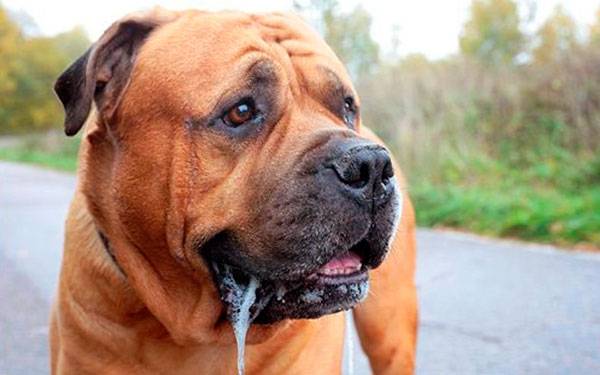Excessive salivation by the dog can cause unpleasant expressions on even the greatest canine lover. Clothing and furniture that have been affected put the love for the faithful four-legged friend to the test. Drooling is a natural body reaction that your dog cannot suppress. Various factors influence whether the fur nose drools a lot or a little. Breed profiles will help you make a conscious decision in favor of a heavily or less heavily salivating companion.
The Essentials in Brief

- The larger your dog’s lips, the more saliva it will produce;
- Small breeds of dogs are less likely to salivate excessively;
- Drooling can be a sign of overheating, stress, or illness.
Dogs That Drool a Lot
Large dogs in particular are prone to excessive saliva production. Within a short period of time, large amounts of water will collect in your cheeks. If the four-legged friend does not swallow them, these swell out of the mouth: the dog is drooling. Molossians and setters, for example, drool a lot.
Molossians
The term Molosser describes massive dog breeds with a mastiff-like, strong physique. They are short or long-haired. The large head and often drooping lips are characteristic. Molossians include St. Bernard, Newfoundland, Cane Corso, and Boxer, among others. Strong dogs are usually particularly sensitive to heat. Breathing speeds up when they get too hot. As a result, they produce more saliva. Part of the saliva evaporates through the tongue and provides the animal with cooling in this way.
The excess fluid runs down the lips over time.
Setter
Setters were originally used for hunting. They are tall and have long fur. Your figure is slim, athletic, and elegant. The animals are particularly distinguished by their long, plush ears and slightly hanging lips. The most famous breeds include Irish Setters, English Setters, and Gordon Setters. Setters are very active dogs and require a lot of exercises. The resulting rapid breathing and the large lips encourage the flow of saliva.
Dogs That Drool Little
Small and medium-sized dogs tend not to drool as much as their large relatives. Their lips are naturally much smaller and rarely protrude beyond the lower jaw. Accordingly, they produce less saliva that can run down the cheeks and drip out of the mouth. Herding dogs, poodles, and lapdogs, for example, drool little.
Herding dogs
Working dogs such as Border Collie, Australian Shepherd, or Shetland Sheepdog are used as herding dogs for herd animals. They keep the animals together and drive them to pasture or back to the barn. Herding dogs are medium-sized and sturdy. Their lips are not drooping, so they drool very little.
Poodle
Poodles are bred to be companions and domestic dogs. Despite their slim figure, they are usually not particularly athletic, but extremely capable of learning. There are many different types of poodles, from small to tall. Due to their pointed, long snouts and short lips, the animals have very little potential for drooling.
Lapdogs
Most small dog breeds rarely drool.
This does not apply to the Molossian breeds such as the French bulldog or the pug.
On the other hand, Chihuahua, Havanese, Dachshund, or Bichon Frize usually do not produce excessive saliva. However, especially after drinking, even a small dog can leave water and saliva residues on floors, furniture, or clothing.
Low Salivation as a Breeding Trait
When choosing a dog, the potential for drooling is an important factor in the purchase decision for many interested parties. Because of these aesthetic aspects, breeders like to choose dogs for their matings that do not shed and drool. In addition, the puppies receive the predicate “suitable for allergy sufferers”.
After all, most dog allergies are caused by saliva that spreads on pet hair that is flying around.
Still, there is no breed of dog that doesn’t drool. A certain flow of saliva in your four-legged friend is normal and harmless. However, if your dog suddenly starts drooling more and more, take him to the vet if in doubt. In addition to overheating and stress, excessive drooling can indicate an illness.

